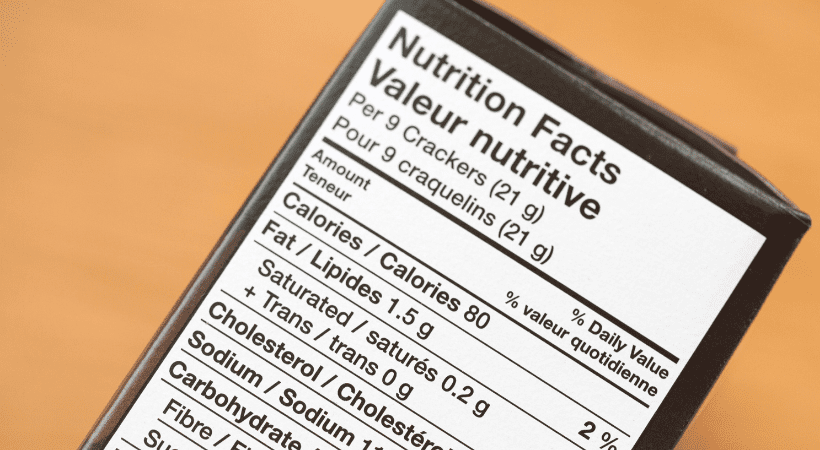Flour Fortification: Changes to The Bread and Flour Regulations post BREXIT.
Flour Fortification: Changes to The Bread and Flour Regulations post BREXIT.
The UK is renowned for having long-standing historic bread and flour regulations. Since the UK left the EU after Brexit, the key piece of legislation affecting such products, ‘The Bread and Flour Regulations (1998)’ was amended through the ‘Food Regulations 2021 – Amendments and Transitional Provision’. In this blog, we discuss the regulations, the challenges they pose for exporters to the EU and what to expect in the future.

What are the UK Bread and Flour Regulations?
The UK’s Bread and Flour Regulations (1998) lays down the compositional and labelling requirements for bread and flour, along with specifying vitamins and minerals which must be added to all white and brown flour, not including wholemeal flour. The Regulation states that fortifying flour with Calcium, Iron, Thiamine (Vitamin B1), and Niacin (Vitamin B3) is mandatory at stipulated levels.
Why are the Bread and Flour Regulations Challenging for the UK and EU flour and bakery products industry?
Under EU Regulation 1925/2006, food products which have had vitamins and minerals added to them as a form of fortification (including flour and the goods baked from flour) must have these vitamins and minerals added to levels considered to be a ‘significant amount’, which is deemed as 15% of the RDA for that vitamin/mineral per 100g/100ml in the final product.
The vitamin and mineral levels in the UK’s Bread and Flour Regulations (1998) are lower than the required ‘significant amount’ for fortified foods defined in EU law. This has led to uncertainty as to whether GB flour and bakery product producers can sell British flour into the EU. Equally, from an EU perspective, there are questions as to whether EU flour and bakery products can be sold on the GB market.
What were the Changes to the Regulations?
To reflect post-BREXIT trade, several amendments have been made to the regulations. In summary, all flour imported and sold B2B or B2C within England must be fortified and any bakery goods produced in the UK for sale here must use fortified flour. The changes are listed below:
- As of October 2022, white and brown wheat flour imported into England from the EU must be fortified, if it’s either:
- sold directly to consumers or businesses in England or
- is used in products marketed or sold in England.
- This rule also applies to flour imported from the EU into England, even if it originally came from a non-EU Member State or country
- As of 1st October 2022, only unfortified white and brown flour can be imported from the EU and non-EU countries into England if it’s lawfully produced and sold in the country you’re importing the flour from. Then, it must be either be:
- directly exported from England to a country outside the UK and not sold to consumers in England or
- used only in products that are then due to be exported outside of the UK and not sold to consumers in England.
- The manufacturing of products for sale in England with unfortified white and brown wheat flour can continue to occur after 1st October 2022 if the flour was both:
- legally imported from the EU, and
- was imported at any time before 1st October 2022
What about other bakery products?
The UK Flour Millers Association provided clarity on bakery and composite products containing fortified flour. The rules on fortification apply only to flour. Bakery products, such as biscuits, bread and batter mixes, etc., imported into the UK do not need to be fortified. However, flour imported to the UK to manufacture products here must be fortified.
Bakery products made with UK-mandatory fortified flour are still permitted to be sold on the EU market, as long as the products are not marketed or labelled as fortified, as they do not meet the ‘significant requirements’ of 15% for fortified foods in the EU.
Northern Ireland Bread and Flour Regulations post-Brexit
As Northern Ireland (NI) has not removed the Mutual Recognition provisions post-Brexit, their domestic Bread and Flour Regulations mean that if a business is exporting flour from the EU to NI, it is permitted to be unfortified. However, the flour must be directly exported from the EU to NI – it cannot pass through GB without being fortified.
Further revisions to the regulations
In 2022, the UK Government published a consultation to revise the Bread and Flour Regulations to include the mandatory addition of folic acid to flour and address some of the abovementioned trade challenges. The consultation closed on 23rd November 2022 and the government agreed to take most of the proposals forward; read more about the latest consultation in our more recent blog here.
Are you struggling to keep up with regulatory change? Please chat with our team about outsourced food labelling compliance support today.
Next reads
The Peanut Diaries: School and Social Occasions
The Peanut Diaries: Navigating Social Events and Celebrations with Food Allergies
The Peanut Diaries: A Parent’s Journey to Uncovering their Child’s Allergy
Redefining Healthy: What the FDA’s New Rules Mean for Food Labels and Nutrition Claims
Keep up to date with our latest insights
Subscribe to our mailing list to stay in touch with the latest news, insights and updates from Ashbury





